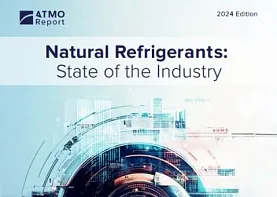The global carbon dioxide market was valued at $84.2 billion in 2021, and is projected to reach $141.9 billion by 2031, growing at a CAGR of 5.5% from 2022 to 2031.
Report Key Highlights
The carbon dioxide market study covers 20 countries. The research includes a segment analysis of each country in terms of both value ($million) and volume (kilotons) for the projected period 2021-2031.
The study integrated high-quality data, professional opinions and analysis, and critical independent perspectives. The research approach is intended to provide a balanced view of global markets and to assist stakeholders in making educated decisions in order to achieve their most ambitious growth objectives.
Over 3,700 product literatures, annual reports, industry statements, and other comparable materials from major industry participants were reviewed to gain a better understanding of the market.
The carbon dioxide market is highly fragmented, with several players including ACAIL GÁS, Buzwair Industrial Gases Factories, Dubai Industrial Gases, Ellenbarrie industrial Gases, Gulf Cryo, India Glycols Limited, Linde plc, Messer Group, SOL Spa, and Taiyo Nippon Sanso Corporation. Also tracked key strategies such as acquisitions, product launches, mergers, expansion etc. of the players operating in the carbon dioxide market.
Carbon dioxide is a key component in the production of carbonated beverages, such as soda, beer, and sparkling water. The demand for carbonated beverages continues to grow worldwide, presenting an opportunity for carbon dioxide producers.
Carbon dioxide is a colorless, odorless gas that is naturally present in the Earth's atmosphere. It is composed of one carbon atom and two oxygen atoms and is a byproduct of various natural and human activities, including respiration, combustion of fossil fuels, and natural processes such as volcanic activity and the decay of organic matter.
The food and beverages segment dominated the global carbon dioxide market in 2021. Carbon dioxide is mainly infused in beverages to prevent spoilage during storage, which causes them to fizz. CO2 is converted to carbonic acid when it comes into touch with water. CO
2 is used to immobilize creatures prior to slaughter. Following the slaughter of these creatures, the meat is processed, stored, and preserved using cryogenic freezing or dry ice. Cryogenic freezing is a method of chilling that uses CO
2 as a refrigerant. Dry ice is used in the transportation and shipment of frozen foods.
Full report




